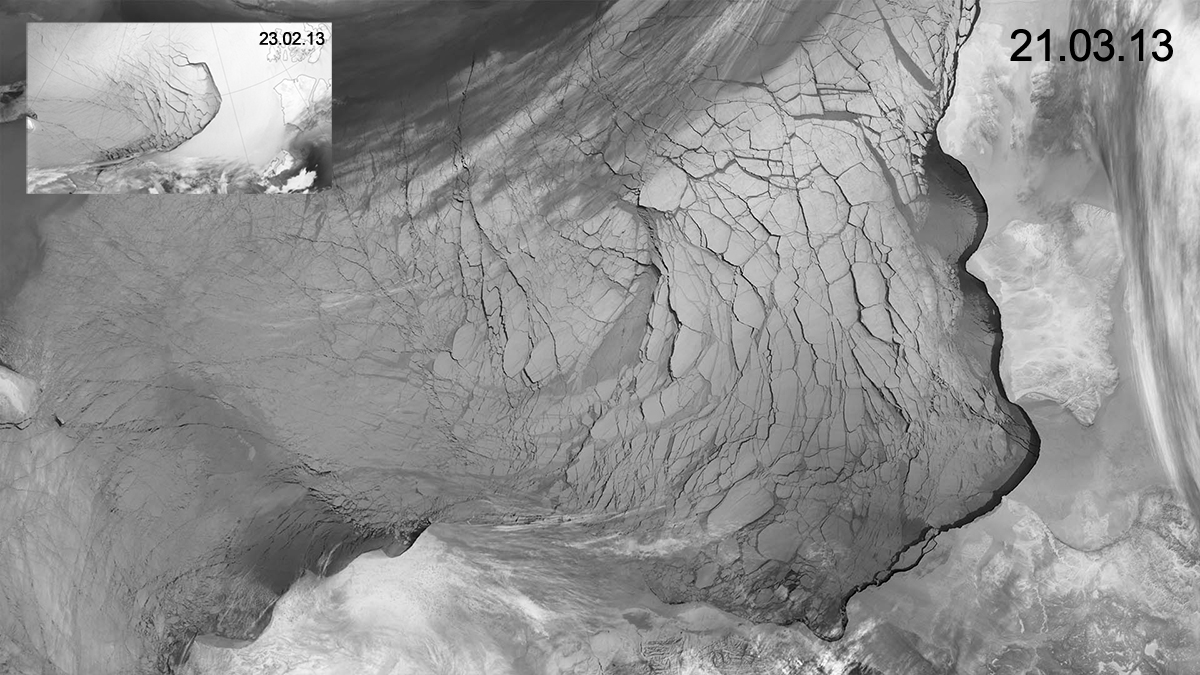In March and February 2013 an area of sea ice north of Alaska broke up over a period of two to three weeks. Strong winds drove large ice floes from the Beaufort Sea toward the Bering Strait. Because the ice had formed during the same winter, it was more fragile and dissolved more easily than older ice would have done.
"We are moving from thicker, multi-year ice to thinner, newly formed ice," says Jonathan Rheinlænder, researcher at the Nansen Environmental and Remote Sensing Center and the Bjerknes Centre.
"There are more leads."
Rheinlænder investigates rapid breakup events. The ice pack disintegrates from a continuous surface into a cluster of floes that are easily moved by currents and winds.

Young ice is weaker
The Arctic sea ice cover reaches its minimum in September, after the summer melt season. 2024 is not among the years with least ice, though there is considerably less than in any year before 2007.
Data from September 2012 show the smallest sea ice extent recorded. The rapid breakup event in the Beaufort Sea in late winter 2013 followed that summer.
Simulations Jonathan Rheinlænder and his colleagues have run with an ice model, indicate that the ice cover in the Beaufort Sea breaks apart more easily now than in the past. More often than before large areas dissolve during storms.
"One might think that the increase in leads was caused by stronger winds," he says.
"That is not the case. We can only explain this with changes within the ice."
Storms have not become more frequent. The fact that the ice cover breaks up more frequently is because the ice is thinner and more fragile.

"If the melting season starts with a thin ice cover, it may break down earlier. At the same time, a lot of other things come into play."
Temperatures and wind conditions during the summer largely determine the extent of sea ice melt.
No time for aging
Open water increases the transport of heat from the ocean and into the cold, Arctic winter night. Leads can cause the sea to cool down more than if it had been protected by ice.
"Previously, it was thought that leads increase the production of new ice," says Jonathan Rheinlænder. "But we must consider both sides of the equation."
When the ice breaks up, it is easily moved. In such years more ice is transported out of the Beaufort Sea. In total, simulations and satellite data show that breakups cause reductions in winter sea ice.
In the past, ice from the western coast of Greenland remained in the Beaufort Sea for several years before being transported out. Now sea ice in this region rarely gets old.
"After 2007 the Beaufort Sea has gone from a nursery to a graveyard," Rheinlænder says.
Referanse
Rheinlænder, J. W., Regan, H., Rampal, P., Boutin, G., Ólason, E., & Davy, R. (2024). Breaking the ice: Exploring the changing dynamics of winter breakup events in the Beaufort Sea. Journal of Geophysical Research: Oceans, 129, e2023JC020395. https://doi.org/10.1029/2023JC020395

